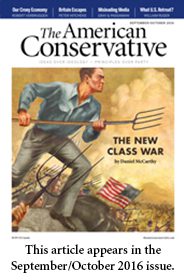Liturgies for Young and Old

I still remember learning Johann Sebastian Bach’s Partita No. 3 in E major. My violin teacher was a stickler for technique, especially when it came to playing Bach. She called this particular piece a “marathon”: it required careful pacing and a good deal of commitment. There are a lot of fast passages that, if learned too hastily, sound rushed and fitful. The key, she affirmed week after week, was to practice the piece slowly with a metronome, paying excruciating detail to rhythm and fingering. She assured me that once I grew intimately acquainted with the notes and bowings, the speed would come by itself. Like second nature.
She was right. And to my surprise, the more time I spent practicing that piece, the more I came to love it. Whereas at the beginning of my study I was only mildly interested in Bach, the more I played this and other pieces by him, the more I came to love his music, with all its delicacy and finesse.
Perhaps it’s this remembrance that helped me identify so deeply with James K.A. Smith’s new book You Are What You Love. Smith begins his book with a classic quotation from St. Augustine’s Confessions, in which Augustine declares that “You [God] have made us for yourself, and our heart is restless until it rests in you.” There is a teleological bent to human nature: we are dynamic beings in search of a specific end. And while philosophy since the Enlightenment has conditioned us to believe “we are what we think” (thanks in large part to René Descartes), Augustine’s statement positions the seat of human character and creaturehood in the heart, not the head, suggesting that our proper end is devotion, not cognition. “What if, instead of starting from the assumption that human beings are thinking things, we started from the conviction that human beings are first and foremost lovers?” Smith asks. Then, the question becomes not “whether you will love something as ultimate,” but rather, “what you will love as ultimate.”
We are in fact creatures most often shaped by our gut instincts and desires—governed by eros, not thought. Smith doesn’t use this term in a merely sexual sense: eros, for him, refers to the entire spectrum of human desires and loves that pervade our lives. But if our loves and motivations are governed by the heart or the gut, not the head, how do we know what we really love or want? Can’t we all too easily deceive ourselves?
Smith says yes—but adds a word of assurance. Our hearts are not unnavigable and unknowable: they bend to the tunes and rhythms we set for them. The key is to know that love is a habit, not merely a choice. In order to foster proper loves, we must consciously choose to immerse ourselves in the correct “liturgies”: defined here as daily rhythms, stories, and habits that shape us.
This is where that Bach Partita comes in: to foster virtuous love is “more like practicing scales on the piano than learning music theory,” writes Smith. “The goal is, in a sense, for your fingers to learn the scales so they can then play ‘naturally,’ as it were. Learning here isn’t just information acquisition; it’s more like inscribing something into the very fiber of your being.” Learning to love God is like learning to play Bach: it requires daily immersion in habits and practices that train the “muscles” of my heart to desire, and thus do, what it ought.
Smith points to the ancient liturgies of the Christian church as guiding voices that can sculpt our loves and pull us toward God. He pays careful attention here to the work that ancient musical worship, prayers, baptism, sacraments, and the liturgical calendar all do in shaping our loves. To take our faith beyond the realm of head knowledge requires “the recalibration of our heart-habits and the recapturing of our imagination”—something that happens when we regularly engage in “embodied, tangible, and visceral” practices. The order and cadence of a worship service begins to shape our imaginations, and thus our loves.
While he doesn’t unequivocally castigate modern churches, Smith strongly argues for a return to ancient ecclesiastical customs and traditions. He suggests that the disillusionment driving record numbers of young people from the church today has more to do with an abandonment of ancient liturgies than with “boring” tradition. Modern youth groups—offering doughnuts and grungy worship bands, hip youth pastors and foosball tables—tend not to reinforce the liturgies. Packaging a teaching in the trappings of pop culture treats young people like “thinking things” who just need the right verses and a few good allegories to stay in the church. But if Smith’s premise is correct, these ministries negate their message by reinforcing secular liturgies on a subconscious, gut level. Youth aren’t nourished by biblical arguments: instead, they walk away with stomachs sated by doughnuts, ears filled with popular music, and emotions fixated on the conversations and flirtations of their peers. This is not how we build ecclesiastical discipleship and community. This is how we lose young people to pop culture.
In contrast, the traditional liturgies of the church reveal to young people a depth that transcends cliché and a community “that is ancient, thereby connecting them to a body that is older than their youth pastor and wider than their youth group.” Indeed, Smith says his experience as a professor at Villanova University suggests that young people will be drawn and kept within the church by high church liturgy and ancient traditions—if the church is brave enough to embrace them once more.
But Smith’s examination doesn’t end with the ecclesiastical. If liturgy is to be defined as the habits and messages that undergird our lives and foster our loves, it cannot be confined to the four walls of the church. So he carries this examination onward: first to the family, calling parents to pay careful mind to the ethos they’re fostering in their homes. “Every household has a ‘hum,’ and that hum has a tune that is attuned to some end, some telos,” Smith writes. “We need to tune our homes, and thus our hearts, to sing his grace.” We can affirm the true, the good, and the beautiful through what we eat, watch, play, and pray.
A Christian home should be mindful of formative liturgies—“story, poetry, music, symbols, and images”—that foster children’s spiritual growth “under the hood” of consciousness. “Children are ritual animals,” he writes, “who absorb the gospel in practices that speak to their imaginations.” Participation in the liturgical calendar—using candles, colors, feasts, festivals, and stories—can help integrate our children into the family of faith.
But quotidian home practices matter, too: a family that regularly gathers around the dinner table is practicing a liturgy. So, too, the family in which gardening or other household chores are done together, bringing order and beauty to the home and its surroundings. Such practices help shape and cultivate the life within.
In education, there are also proper liturgies we can foster. Smith notes that from Sunday school to the university, there are stories of the good life, of what we ought to love, that are constantly propagated to our kids. He suggests fostering their moral imaginations at every opportunity, whether learning economics, U.S. history, or social studies. If we believe there’s a telos to human existence, and we want our children to recognize it, we should craft their education in such a way that they learn to trace its patterns throughout life. A “holistic, formative approach to education … is bound up with a teleological purview—embedding the tasks of teaching and learning in a bigger vision and ultimate Story that guide and govern learning.”
Smith warns that, if we do not tell such stories, we run the risk of our children tuning their hearts to culture’s alternative messages—to what he calls “rival liturgies.” These have their own vision of the good life and man’s telos and are often fostered in specific spaces: the shopping mall, for instance, fosters a worship of materialism and consumerism alongside deification of the self. One could also point to habits of worship fostered around the television, the soccer fields, or football stadiums, and the ever present smartphone. Pornography is a steadily more pervasive influence on American society, shaping views of sex and intimacy in adolescents and adults. This is an example of how a secular liturgy can shape our loves.
 Because “our idolatries … are more liturgical than theological,” our daily habits and haunts reveal more about us than the statements of faith we might post on Facebook. Regardless of where you go, what you watch, what you listen to, there are liturgies to consume. And their messages—full of poignancy and life-driving potency—will direct your life goals and shape your character. If Smith is right, you become them because you are what you love.
Because “our idolatries … are more liturgical than theological,” our daily habits and haunts reveal more about us than the statements of faith we might post on Facebook. Regardless of where you go, what you watch, what you listen to, there are liturgies to consume. And their messages—full of poignancy and life-driving potency—will direct your life goals and shape your character. If Smith is right, you become them because you are what you love.
Much like C.S. Lewis’s Mere Christianity, Smith’s book bridges denominational divides in order to urge a deeper appreciation and embrace of catholic, historic Christianity. He aims to foster practices that will encourage our faiths on an individual and church-wide level, without condemning a specific set of Christian believers. Such a project seems very timely, as legions of millennials leave the faith and an increasing number of American churches are shorn of their liturgical, theological splendor to become gyms and apartment complexes. American families, often driven apart by divorce, alienation, or generational division, are here reminded why they must hold fast the rituals and customs of their faith. We’re urged to keep on the lookout for secular, consumerist liturgies that might tempt us to improper loves.
It’s worth noting, too, that this book is palatable and engaging for those not sold on ancient church liturgies. I’ve spent the past couple months reading it aloud with my husband, who does not have a high church background and has expressed valid reservations in the past concerning its cadences of worship. This book helped him understand why I love liturgy and gave him a larger vision for the role liturgy can play in the church, regardless of one’s denomination.
Every night, as I tuck my baby girl into bed, I sing hymns and say the Lord’s prayer with her. If you think of her as just a tiny “thinking thing,” the ritual wouldn’t make sense. She’s too young to yet understand the words. But if we are indeed “first and foremost lovers,” creatures shaped by practice and liturgy, then every song and word has a purpose.
Gracy Olmstead is a senior writer for The American Conservative.